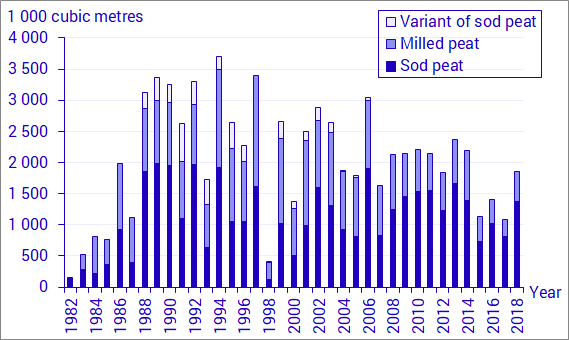Peat 2018 - Production, use and environmental impact:
Favourable weather led to increase in harvest of fuel peat
Statistical news from Statistics Sweden 2019-06-12 9.30
The harvest of fuel peat increased by 72 percent in 2018. One reason for this was the hot and dry weather in summer 2018. Increased demand for peat in the past year had a positive impact on the harvest of fuel peat. However, the harvest was inhibited by the risk of fire.

Harvest horticultural peat remained unchanged
The harvest of horticultural peat amounted to 1 604 000 cubic metres in 2018, which means it was on the same level as the previous year despite favourable weather. One reason for this was the increased risk of fire that affected harvesting of horticultural peat; as in forestry, harvesting must be done in the evening and at night, and is more limited.
Horticultural peat is used mainly as a soil improver in gardening.
Use of peat increased
Combustion of peat and peat briquettes is almost exclusively used for the production of electricity and district heating, often together with biofuel. In 2018, the combustion of peat increased by 33 percent. The reason for this was a cold winter and a shortage of biofuels in Sweden and its neighbouring countries. Peat is mainly combusted in biofuel boilers, which led to greater demand for peat.
Peat and peat briquettes accounted for approximately one percent of the national (territorial) greenhouse gas emissions in 2017.
Statistical Database
More information is available in the Statistical Database
Feel free to use the facts from this statistical news but remember to state Source: Statistics Sweden.
